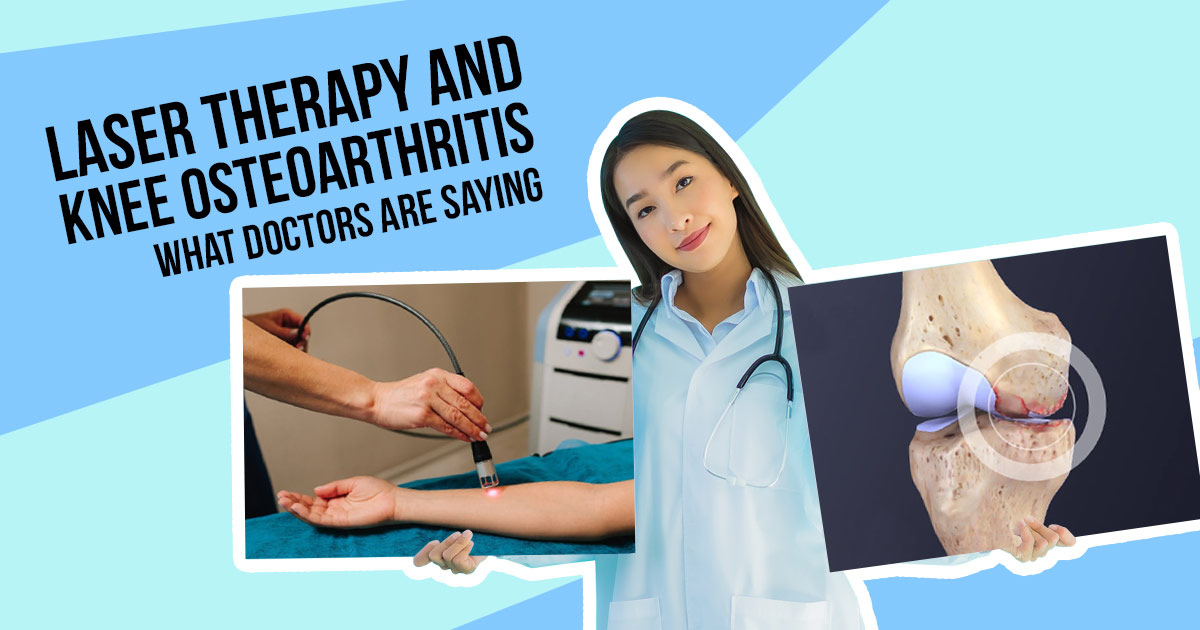Laser Therapy for Knee Osteoarthritis – What You Need to Know

Millions of people struggle with knee osteoarthritis, a condition that brings persistent pain, stiffness, and limited mobility. While medications, physical therapy, and surgery offer relief, many explore alternative solutions for better long-term management. One emerging solution is laser therapy for knee osteoarthritis, a non-invasive treatment that aims to reduce pain and improve joint function. But is it effective? It’s important to understand it first before trying it to treat knee osteoarthritis.
Understanding Laser Therapy for Knee Osteoarthritis
Laser therapy, often called low-level laser therapy (LLLT) or photobiomodulation therapy, harnesses specific light wavelengths to reach deep into tissues. Instead of cutting like surgical lasers, these gentle beams activate cellular processes, easing inflammation, reducing pain, and encouraging natural healing.
How Laser Therapy Works
Laser treatment for joint pain involves directing light energy into the affected area. The light interacts with cells, enhancing their ability to repair and regenerate. This technique not only soothes pain and inflammation but also enhances circulation and accelerates the body’s natural tissue repair process.
- Inflammation Reduction – Laser therapy helps regulate inflammatory responses by reducing pro-inflammatory markers in the joint.
- Cellular Repair – Light energy boosts mitochondrial function, increasing ATP production and accelerating tissue repair.
- Pain Relief – The therapy encourages the release of endorphins, the body’s natural painkillers, leading to immediate symptom relief.
Is Laser Therapy Effective for Knee Pain?
Scientific studies have evaluated whether laser therapy works for knee osteoarthritis, with promising results.
Scientific Evidence Supporting Laser Therapy
A systematic review by Stausholm et al. (2019) examined randomized placebo-controlled trials on laser therapy for knee osteoarthritis. Findings showed significant pain reduction and improved function in patients receiving low-level laser therapy. The research confirmed that laser therapy offers a safe and effective approach to managing knee osteoarthritis symptoms.
Another study by Ahmad et al. (2022) explored the effects of laser therapy combined with rehabilitation exercises. Findings showed that patients with knee osteoarthritis experienced reduced pain, less stiffness, and improved mobility. High-intensity laser therapy, when used alongside rehabilitation, provided better outcomes than rehabilitation alone.
A review by DE Oliveira et al. (2022) focused on photobiomodulation therapy, including both low-intensity laser and LED treatments. The research confirmed that laser therapy effectively reduces musculoskeletal pain and inflammation, particularly in chronic conditions like knee osteoarthritis.
Conditions Laser Therapy May Help
Osteoarthritis Management
Laser therapy for osteoarthritis has been extensively studied, particularly in cases of mild to moderate knee osteoarthritis. Many patients report less pain and better mobility, which can help postpone the need for invasive procedures like knee surgery.
Post-Surgical Recovery
After knee procedures like arthroscopy or joint replacement, laser therapy may help minimize swelling and speed up healing, supporting smoother recovery.
Sports Injuries and Chronic Pain Syndromes
Athletes suffering from knee injuries, such as ligament sprains or tendonitis, may benefit from laser treatment for joint pain. The therapy can help reduce inflammation and enhance tissue regeneration.
Alternative Treatments to Consider
Laser therapy for knee osteoarthritis is not the only option. Patients often combine treatments for better results.
Traditional Approaches
- Physical Therapy – Strengthening muscles around the knee improves stability and reduces strain on joints.
- Medications – NSAIDs and corticosteroid injections provide temporary relief but do not address underlying joint damage.
- Surgery – Severe osteoarthritis may require total knee replacement when other treatments fail.
Complementary Therapies
- Acupuncture – Some studies suggest it may help reduce knee pain.
- TENS Therapy – Electrical stimulation disrupts pain signals and can be used at home.
- Lifestyle Adjustments
- Weight Management – Reducing excess weight minimizes stress on knee joints.
- Exercise – Low-impact activities like swimming and cycling promote joint flexibility and muscle strength.
Limitations and Considerations of Laser Therapy
Although laser therapy for osteoarthritis offers promising benefits, it does not provide a guaranteed cure.
Factors That Affect Outcomes
- Severity of Osteoarthritis – Patients with advanced joint damage may not see significant improvement.
- Provider Expertise – Effectiveness depends on the skill of the practitioner and the laser settings used.
- Treatment Consistency – Regular sessions are needed for optimal results.
Accessibility and Cost Concerns
Laser therapy can be expensive, with sessions ranging from $50 to $200. Most insurance plans do not cover laser therapy, making it a financial consideration for many patients.
Potential Side Effects
Laser therapy is considered safe, though rare cases may involve temporary skin irritation or heightened sensitivity. Consulting a healthcare provider before treatment is recommended.
Exploring the Future of Knee Pain Management
Laser therapy for knee osteoarthritis offers a promising, non-invasive alternative for managing joint pain and improving mobility. Scientific research supports its effectiveness, especially for mild to moderate cases. While results vary, many patients find relief when combining laser therapy with other treatments.
For those considering laser therapy, consulting a healthcare provider is essential. Understanding the benefits, limitations, and costs can help determine whether this treatment fits into a personalized care plan. Laser therapy might not serve as a complete replacement for traditional treatments, but it can enhance a well-rounded strategy for managing knee pain.
